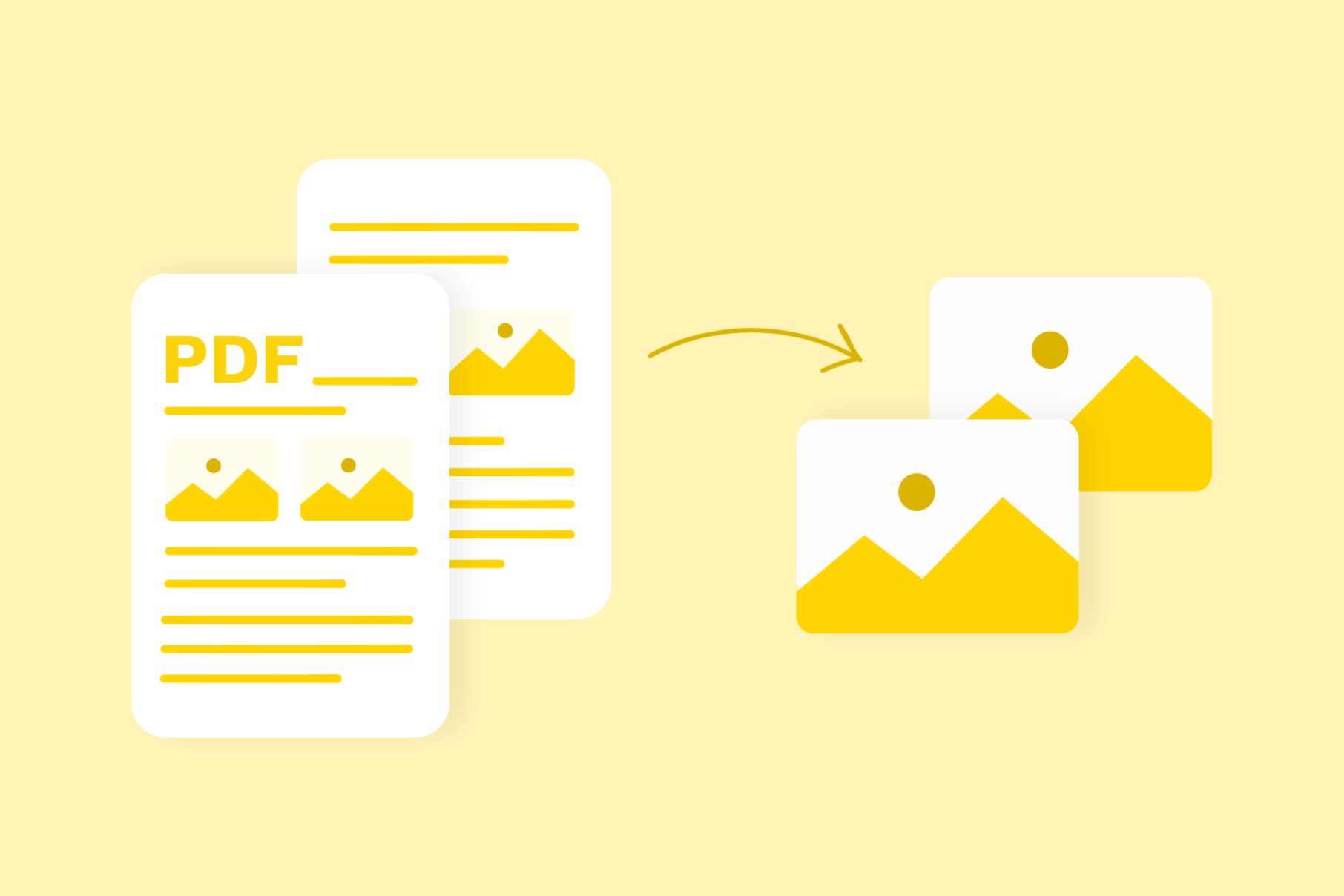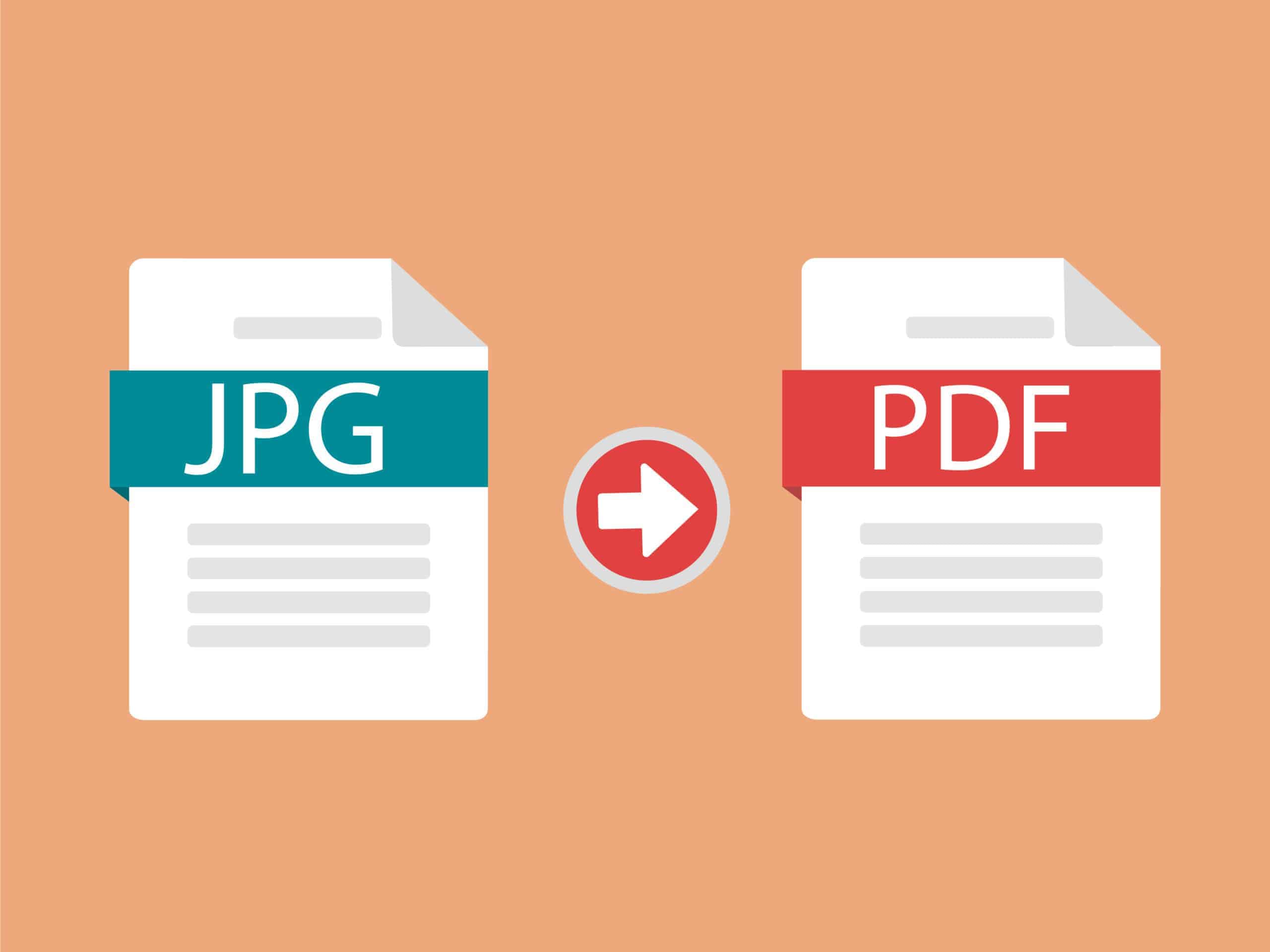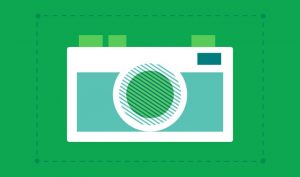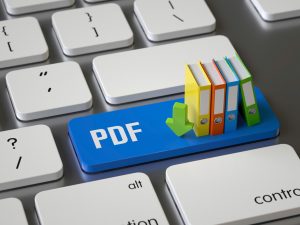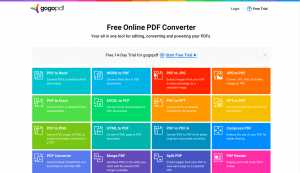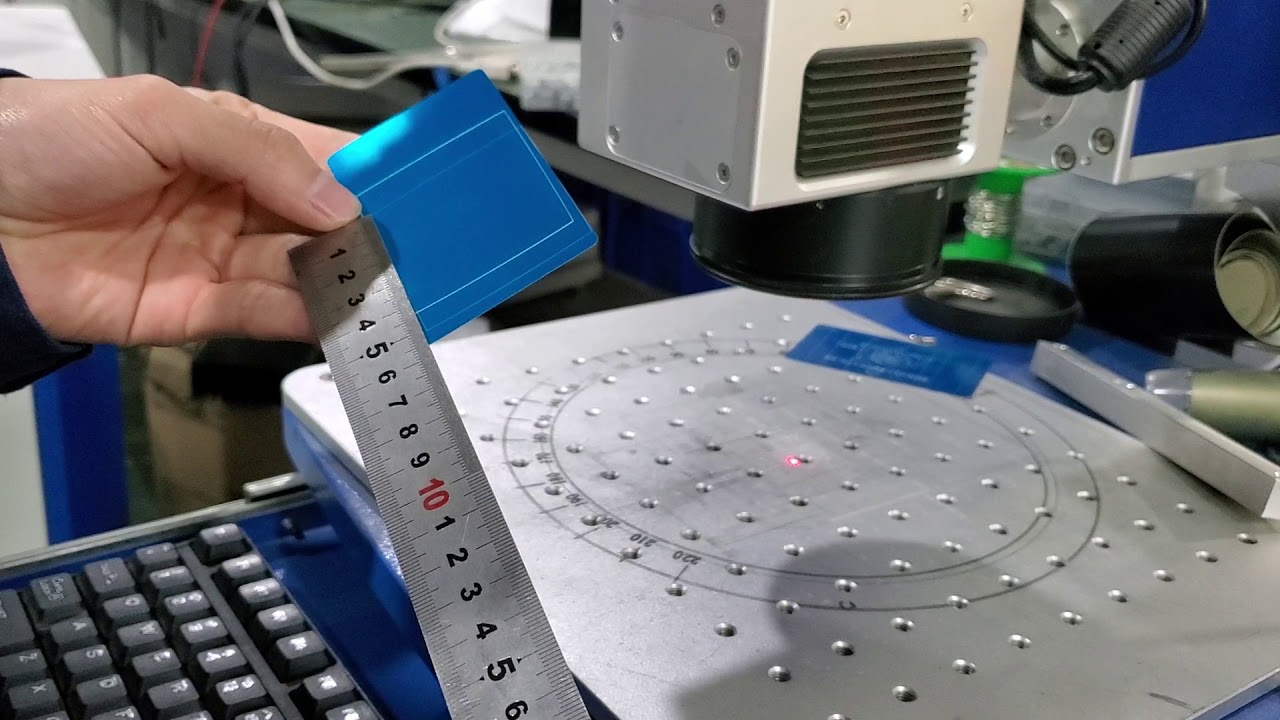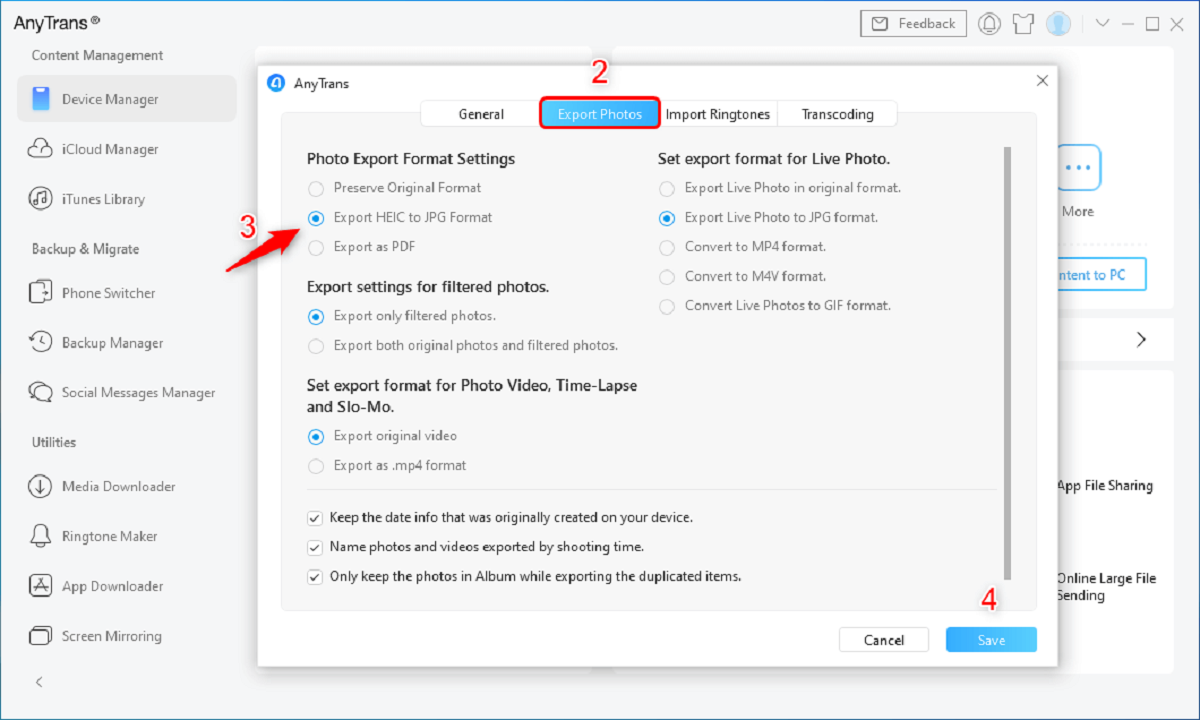Introduction
PDF (Portable Document Format) and JPG (Joint Photographic Experts Group) are two widely used file formats for different purposes. PDF is commonly used for documents that need to be shared and viewed in a consistent format across different platforms, while JPG is a popular format for images due to its compression capabilities.
Converting PDF files to JPG format can be necessary for a variety of reasons. For instance, if you want to extract images from a PDF document or if you need to convert a PDF file into an image for easier sharing or editing purposes. While there are various methods available to convert PDF to JPG on Windows systems, it is important to choose the one that best suits your requirements.
This article will explore different methods to convert PDF to JPG on Windows systems, providing you with options based on your preferences and needs. Whether you prefer using software programs, online converters, or built-in tools, we will discuss the steps involved in each method to help you make an informed decision.
By understanding the different methods available, you can choose the one that fits your workflow and ensures the highest output quality for your converted JPG images. Let’s dive into the various ways you can convert PDF to JPG on your Windows system.
What is PDF and JPG?
PDF (Portable Document Format) and JPG (Joint Photographic Experts Group) are two widely recognized file formats, each with its own unique characteristics and purposes.
A PDF file is a format that preserves the fonts, images, graphics, and layout of any document, regardless of the software or operating system used to create it. This makes PDF a preferred format for sharing and distributing documents, as it ensures that the document will appear the same way on any device or platform.
JPG, on the other hand, is a commonly used image file format that utilizes lossy compression to store photographic images. It is known for its ability to reduce the file size of images without significant loss in quality. Due to its compression capabilities, JPG is widely used for storing, sharing, and displaying images on the web or digital platforms.
PDF files are primarily used for documents such as reports, ebooks, manuals, and forms, where maintaining the original formatting is crucial. On the other hand, JPG files are primarily used for images, including photographs, illustrations, and graphics.
While PDF files can contain images, text, and other multimedia elements, JPG files are solely used for storing images. Converting a PDF file to JPG format becomes necessary when extracting images from a PDF document for further editing or sharing purposes.
Furthermore, converting PDF files to JPG format can also be beneficial when you want to create a slideshow of images, display images on a website, or edit individual images separately. By converting a PDF to JPG, you can isolate and work with individual images instead of the whole document.
Now that we have a clear understanding of what PDF and JPG files are and their respective purposes, let’s explore the methods to convert PDF to JPG on Windows systems.
Why convert PDF to JPG?
There are several reasons why you may need to convert a PDF file to JPG format. Here are some common scenarios where converting PDF to JPG becomes necessary:
1. Image extraction: PDF files often contain high-quality images that you may want to extract for various purposes, such as using them in presentations, websites, or graphic design projects. Converting the PDF to JPG format allows you to extract individual images easily.
2. Easier sharing: While PDF files are great for preserving the layout and formatting of documents, they are not as widely supported as JPG files, especially when it comes to sharing on social media platforms or uploading to websites. By converting a PDF to JPG, you can ensure that the images can be easily shared and viewed by others.
3. Editing flexibility: When you convert a PDF to JPG, you can edit the resulting JPG images using various image editing software, such as Adobe Photoshop or GIMP. This gives you more creative control over the images and allows you to make specific changes or enhancements.
4. Web compatibility: JPG is a widely accepted image format on the web. If you want to display images from a PDF file on a website, converting the PDF to JPG makes it easier to integrate the images into your web design and ensures optimal compatibility across different web browsers and devices.
5. Reduced file size: PDF files can be large, especially if they contain multiple pages and high-resolution images. Converting a PDF to JPG can significantly reduce the file size, making it easier to manage and share the images efficiently. This is particularly useful when uploading images to websites or sending them via email.
6. Individual image editing: When a PDF file contains multiple images, converting it to JPG allows you to edit each image individually. This can be useful if you only need to make adjustments to certain images within a document without affecting the rest of the content.
7. Slide shows and presentations: Converting a PDF file that contains multiple images into a series of JPG images enables you to create engaging slide shows or presentations. You can easily arrange and customize the order of the images, apply transitions, and add captions or annotations to enhance the visual impact of your presentation.
By converting PDF to JPG, you can unlock the potential of the images contained within the PDF file, making them more versatile for various purposes. The next section will discuss different methods to convert PDF to JPG on Windows systems.
Methods to convert PDF to JPG on Windows
When it comes to converting PDF files to JPG format on a Windows system, there are several methods you can choose from. Each method offers its own set of advantages and may be more suitable depending on your specific needs. Here are some common methods:
Method 1: Using Adobe Acrobat: If you have Adobe Acrobat installed on your Windows system, you can easily convert PDF files to JPG format. Simply open the PDF file in Adobe Acrobat, go to “File,” select “Export To,” and choose “Image.” From there, you can select the JPG format and adjust any settings or preferences before exporting the file as a JPG image.
Method 2: Using online converters: There are numerous online PDF to JPG converters that allow you to convert your PDF files to JPG format without the need to install any software. Simply upload your PDF file to the website, choose the JPG format, and click the conversion button. The website will then convert your PDF to JPG and provide you with a downloadable file.
Method 3: Using Microsoft Word: You can also utilize Microsoft Word to convert PDF files to JPG format. Open Microsoft Word and go to “File,” then “Open.” Browse for the PDF file you wish to convert and select it. Word will automatically convert the PDF to an editable document. From there, you can right-click on any image within the document, select “Save as Picture,” and choose the JPG format.
Method 4: Using specialized software: There are numerous specialized software programs available for converting PDF files to JPG format on Windows systems. These programs offer advanced features, including batch conversion, image quality adjustments, and customization options. Some popular software options include Adobe Photoshop, ABBYY FineReader, and Nitro Pro.
Regardless of the method you choose, it is important to keep in mind the quality and resolution of the resulting JPG images. Adjust any settings or preferences according to your needs to ensure optimal output quality. Additionally, consider the security and privacy of your PDF files when using online converters, and only use reputable and trusted conversion websites.
Now that we have explored various methods to convert PDF to JPG on Windows, let’s move on to the next section to learn some useful tips for converting PDF to JPG efficiently.
Method 1: Using Adobe Acrobat
Adobe Acrobat is a widely used software program that provides various features for working with PDF files, including the ability to convert PDF to JPG format. If you have Adobe Acrobat installed on your Windows system, follow these steps to convert your PDF files to JPG:
1. Open the PDF file: Launch Adobe Acrobat on your Windows system and open the PDF file you want to convert to JPG. You can do this by clicking on “File” in the top menu and selecting “Open.”
2. Access the export options: After opening the PDF file, go to the “File” menu, and then select “Export To.” This will open a dropdown menu with different export options.
3. Select the image format: From the export options, choose “Image.” This will open a sub-menu where you can select the specific image format you want to export to. In this case, choose “JPEG” or “JPG” to convert your PDF file to JPG format.
4. Adjust image settings: Upon selecting the JPG format, you may have the option to adjust image settings and preferences. This can include adjusting the image quality, resolution, color space, and other relevant parameters. Customize these options according to your requirements or leave them as default settings.
5. Choose the output location: After adjusting the image settings, specify the output location for the converted JPG file. Select a folder or directory on your Windows system where you want the converted file to be saved.
6. Start the conversion: Once you have set the output location and adjusted any necessary settings, click on the “Export” button to start the conversion process. Adobe Acrobat will convert your PDF file to JPG format and save the resulting file in the specified output location.
It is worth mentioning that Adobe Acrobat offers advanced features for PDF manipulation and customization. Depending on the version of Adobe Acrobat you have, you may have additional options for refining the conversion process. Explore the software’s features and preferences to make the most out of your PDF to JPG conversions.
Using Adobe Acrobat to convert PDF to JPG provides a reliable and efficient method, especially if you often work with PDF files and require more control over the conversion process. However, if you do not have access to Adobe Acrobat, there are alternative methods such as online converters, Microsoft Word, or specialized software that can also accomplish the conversion successfully.
Now that you are familiar with the first method of converting PDF to JPG using Adobe Acrobat, let’s move on to explore other methods in the upcoming sections.
Method 2: Using Online Converters
If you prefer a quick and convenient method to convert PDF to JPG on your Windows system without the need to install any software, online converters are a great solution. Online converters allow you to upload your PDF file to a website and convert it to JPG format with just a few simple steps. Here’s how you can convert PDF to JPG using online converters:
1. Select a reliable online converter: Start by choosing a reputable and secure online converter from the many available options. Look for converters that support PDF to JPG conversion and have positive user reviews.
2. Upload your PDF file: Once you’ve selected an online converter, you’ll typically find an upload button or an area to drag and drop your PDF file. Click on the appropriate option and select the PDF file you want to convert.
3. Choose the output format: In this case, select JPG as the output format for your conversion. Many online converters offer multiple output formats, but make sure to specifically choose JPG to convert your PDF file to a series of JPG images.
4. Adjust conversion settings (optional): Depending on the online converter you’re using, there may be options to adjust certain conversion settings. These settings can include image quality, resolution, and other preferences. Customize these settings according to your requirements, or proceed with the default settings if you’re unsure.
5. Start the conversion: Once you’ve uploaded your PDF file and chosen the output format, click on the conversion button to initiate the conversion process. The online converter will then convert your PDF file to JPG format. The time taken for the conversion will depend on the size of the PDF file and the processing power of the online converter.
6. Download the JPG files: After the conversion process is complete, the online converter will provide you with a download link or option to save the resulting JPG files. Click on the link or button to download the converted JPG files to your Windows system.
It’s important to note that while online converters offer convenience and simplicity, they may have limitations in terms of file size restrictions, privacy concerns, or the need for a stable internet connection. Therefore, it’s recommended to use trusted and reliable online converters to ensure the security and quality of your PDF to JPG conversion.
Now that you are familiar with the method of using online converters to convert PDF to JPG, let’s explore other methods in the upcoming sections.
Method 3: Using Microsoft Word
If you have Microsoft Word installed on your Windows system, you can utilize its built-in features to convert PDF files to JPG format. Although Microsoft Word is primarily a word processing tool, it has the capability to open and convert PDF files. Here’s how you can convert PDF to JPG using Microsoft Word:
1. Open Microsoft Word: Launch Microsoft Word on your Windows system and ensure that you have the latest version installed for optimal functionality.
2. Open the PDF file: In Microsoft Word, click on the “File” tab in the top-left corner of the screen, then select “Open.” Browse for the PDF file you want to convert and select it. Microsoft Word will automatically convert the PDF file into an editable document.
3. Save the PDF as a Word document: Once the PDF file is open in Microsoft Word, go to the “File” tab again and select “Save As.” Choose a location on your Windows system where you want to save the file and give it a suitable name. Make sure to save it as a Word document format (either .doc or .docx).
4. Convert Word document to JPG: With the Word document saved on your Windows system, you can now convert it to JPG format. Locate the Word document in the saved location, right-click on it, and select “Open with.” Choose a suitable image editing software such as Microsoft Paint or another image editing program. Once opened, go to the “File” menu and select “Save As” or “Export.” Choose the JPG format and save the file as a JPG image.
5. Adjust image settings (optional): Depending on the image editing software you’re using, you may have the option to adjust image settings such as quality, resolution, or color space. Customize these settings according to your preferences, or proceed with the default settings provided by the software.
6. Save the JPG file: After adjusting the image settings, click on the “Save” or “Export” button to save the Word document as a JPG file. Choose a location on your Windows system to save the JPG file and give it a suitable name.
Using Microsoft Word to convert PDF to JPG provides a simple, built-in solution if you already have the software installed on your Windows system. However, keep in mind that there may be limitations in terms of image quality or advanced conversion options compared to dedicated PDF to JPG converters or image editing software.
Now that you are familiar with the method of using Microsoft Word to convert PDF to JPG, let’s explore other methods in the upcoming sections.
Method 4: Using Specialized Software
If you frequently work with PDF files and require more advanced features and customization options for converting PDF to JPG on your Windows system, using specialized software is a suitable method. There are various dedicated software programs available that offer comprehensive tools specifically designed for PDF conversions. Here’s how you can use specialized software to convert PDF to JPG:
1. Select a specialized software: Start by choosing a reputable and feature-rich software program for PDF conversions. Examples of popular software options include Adobe Photoshop, ABBYY FineReader, and Nitro Pro. Ensure that the software supports the conversion of PDF files to JPG format.
2. Install and launch the software: Download and install the chosen specialized software on your Windows system. Launch the program to begin the conversion process.
3. Import the PDF file: In the specialized software, look for an option to import or open the PDF file you want to convert. Typically, you can do this by clicking on “File” in the top menu and selecting an option like “Open,” “Import,” or “Add File.” Browse for the PDF file on your Windows system and select it.
4. Adjust conversion settings: The specialized software will provide options for adjusting various conversion settings according to your requirements. These settings may include image quality, resolution, color space, and other customization options. Explore the software’s interface and adjust the settings to achieve the desired output results.
5. Specify the output format: Designate JPG as the output format for your conversion. Look for an option within the software to choose the JPG format specifically.
6. Start the conversion: Once you have adjusted the settings and selected the output format, initiate the conversion process by clicking on a “Convert,” “Start,” or similar button within the software. The software will then convert the PDF file to JPG format using the specified settings.
7. Save the JPG file: After the conversion process is complete, the specialized software will allow you to save the resulting JPG file. Choose a location on your Windows system where you want to save the JPG file and assign it a suitable name.
By using specialized software, you can take advantage of advanced features and options that are specifically tailored for PDF to JPG conversions. This method is especially beneficial if you require precise control over the conversion process or if you regularly work with PDF files and need a comprehensive solution for various PDF-related tasks.
Now that you are familiar with the method of using specialized software to convert PDF to JPG, let’s move on to the next section to learn some useful tips for converting PDF to JPG efficiently.
Tips for Converting PDF to JPG Efficiently
Converting PDF files to JPG format can be a simple and efficient process if you follow these tips:
1. Use high-quality PDF files: Start with PDF files that have a high resolution and good image quality. This will ensure that the resulting JPG images are clear and detailed.
2. Adjust image settings: When converting PDF to JPG using specialized software or image editing programs, take advantage of the available image settings. Adjust the image quality, resolution, and color space to achieve the desired output results.
3. Consider batch conversion: If you have multiple PDF files that need to be converted to JPG format, use batch conversion whenever possible. This will save time and effort by converting multiple files simultaneously.
4. Choose appropriate image compression: Depending on your specific needs, consider using appropriate image compression when converting PDF to JPG. Balancing image quality and file size can be crucial, especially when sharing or uploading the images.
5. Test different methods: Explore various methods for converting PDF to JPG, such as using different software programs or online converters. Test each method to find the one that best suits your requirements in terms of ease of use, speed, and quality of outcomes.
6. Backup your PDF files: Before converting PDF files to JPG, it is advisable to create a backup of your original PDF files. This will ensure that you have a copy of the original files in case any issues or errors occur during the conversion process.
7. Organization and naming: Maintain a systematic approach when organizing and naming your converted JPG files. Consider using descriptive names or numbering systems to easily identify and locate specific images later.
8. Ensure valid HTML encoding: When embedding images converted from PDF to JPG in HTML files, make sure to validate the HTML encoding. This ensures that the images are displayed correctly and efficiently within the HTML structure.
By following these tips, you can optimize the process of converting PDF to JPG and achieve the desired results efficiently. Whether you’re working with a single PDF file or batch conversions, these tips will help you streamline the workflow and enhance the quality of your JPG images.
Now that we have explored various methods and tips for converting PDF to JPG on Windows systems, you are equipped with the knowledge to choose the most suitable method and efficiently convert your PDF files to JPG images.
Conclusion
Converting PDF files to JPG format on a Windows system can be done through various methods, depending on your needs and preferences. Whether you choose to use Adobe Acrobat, online converters, Microsoft Word, or specialized software, each method offers its own advantages and considerations.
Adobe Acrobat provides a comprehensive solution for converting PDF to JPG, especially if you require advanced features and customization options. Online converters offer convenience and simplicity, allowing you to convert PDF files to JPG without the need for software installation. Microsoft Word provides a built-in option for converting PDF to JPG, although with more limited capabilities. Specialized software provides advanced tools and flexibility for PDF conversions, making it a suitable choice for those who frequently work with PDF files.
Regardless of the method you choose, it is important to consider the image quality, adjust settings, and ensure efficient HTML encoding when embedding the converted JPG images within HTML files.
By following the tips provided in this article, such as using high-quality PDF files, adjusting image settings, and organizing your converted files, you can streamline the conversion process and achieve optimal results.
Now that you are familiar with the different methods and tips for converting PDF to JPG on Windows systems, you can select the most suitable approach based on your specific requirements and preferences. Experiment with different methods to find the one that best meets your needs, and enjoy the benefits of converting PDF files to JPG format for various purposes.







